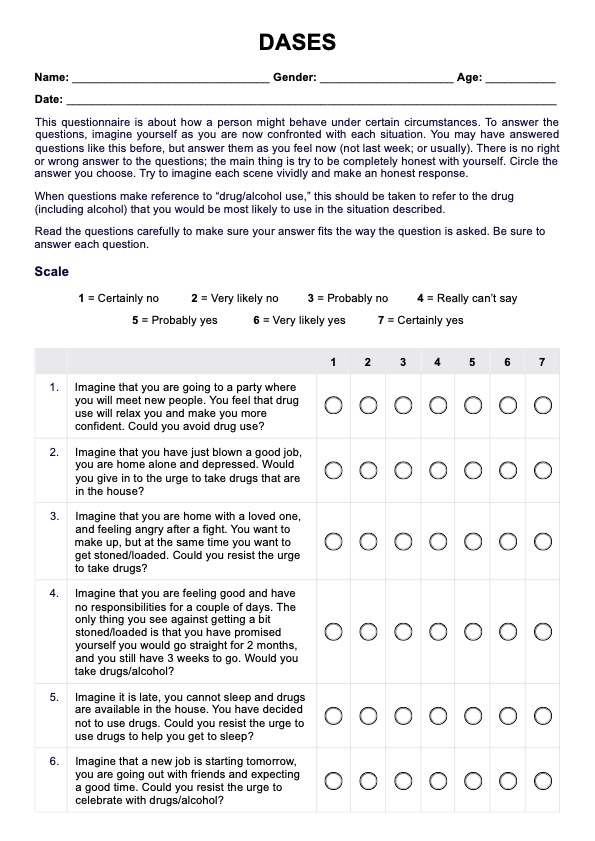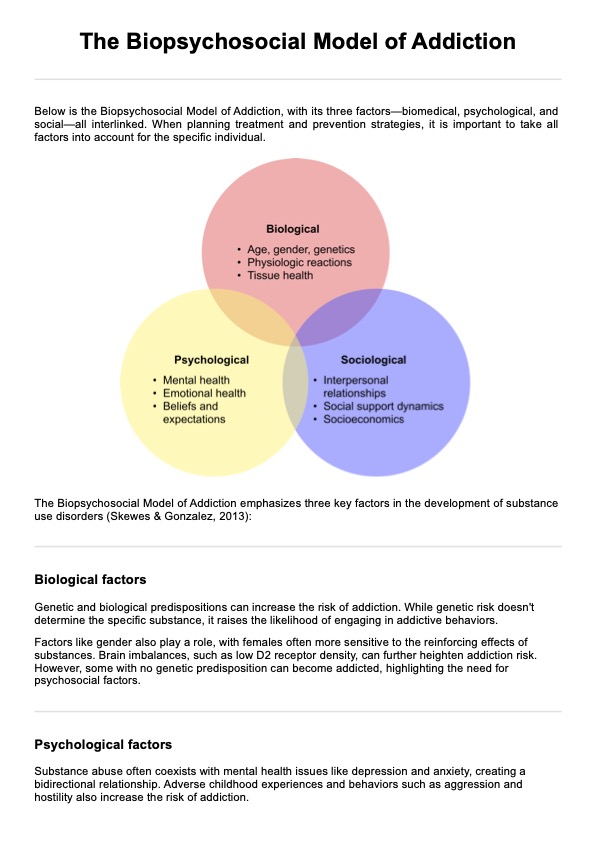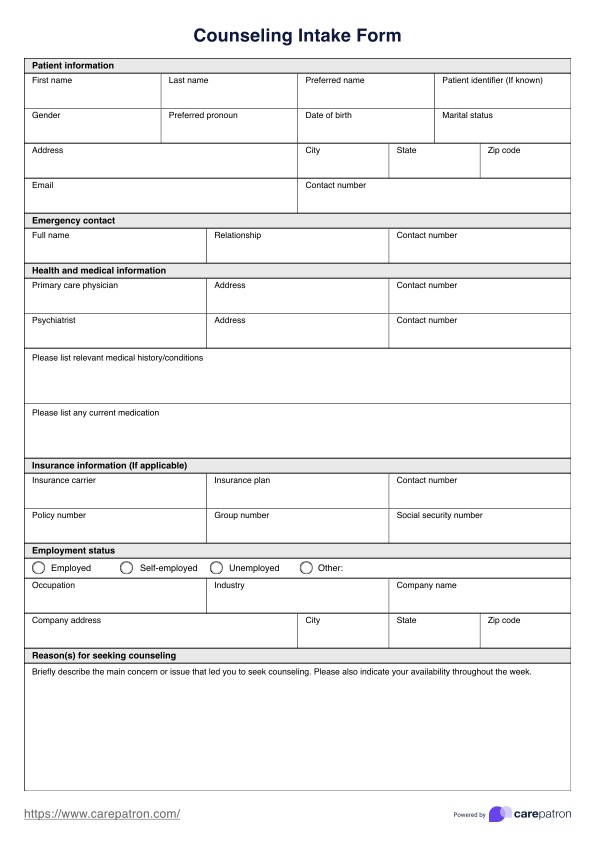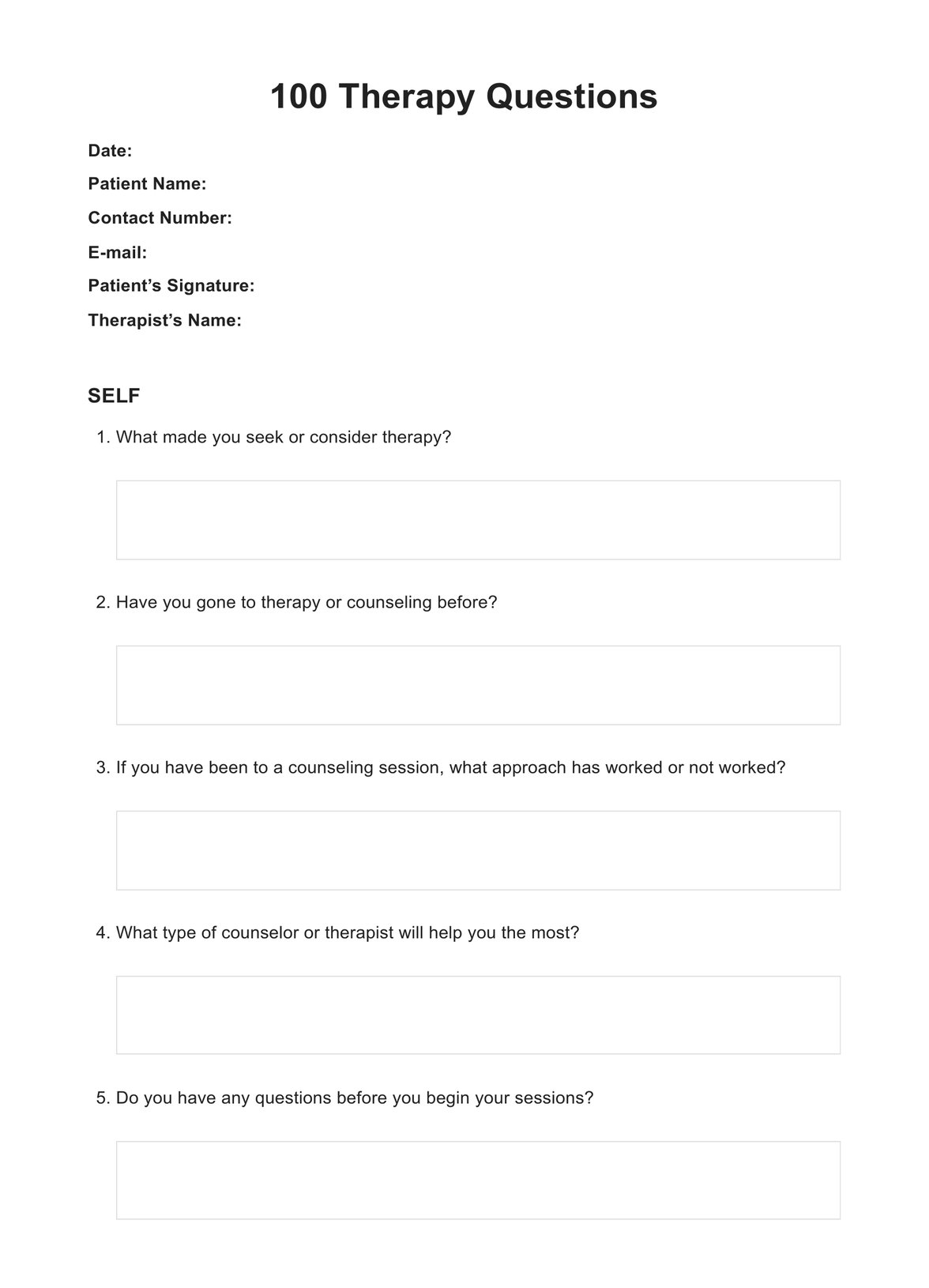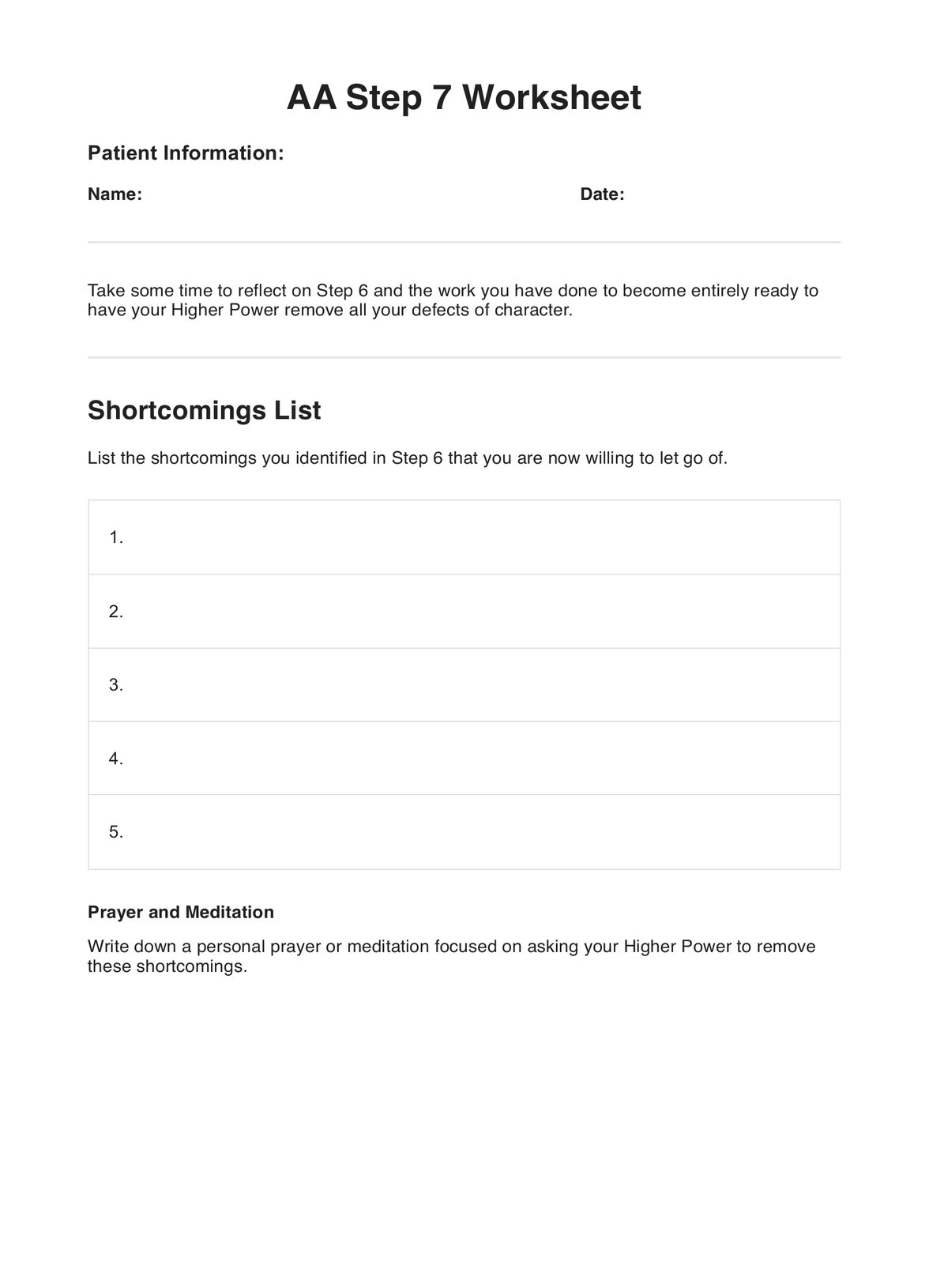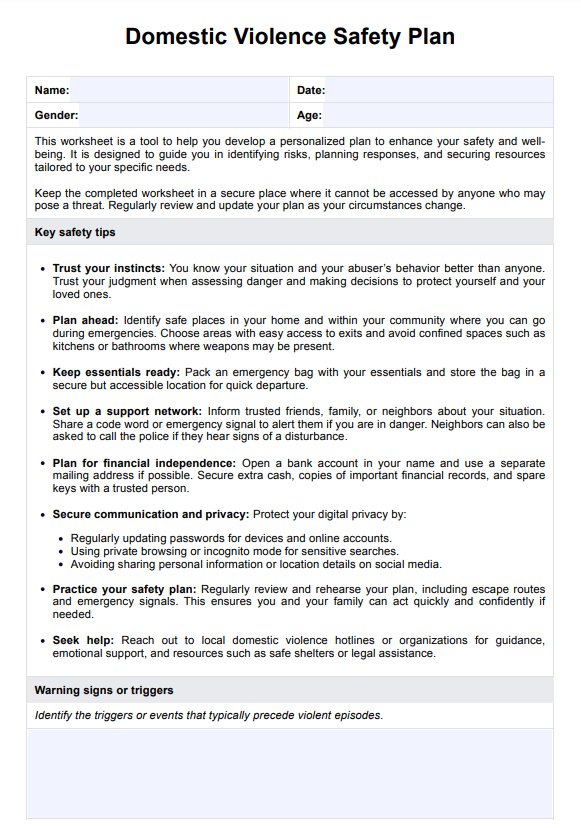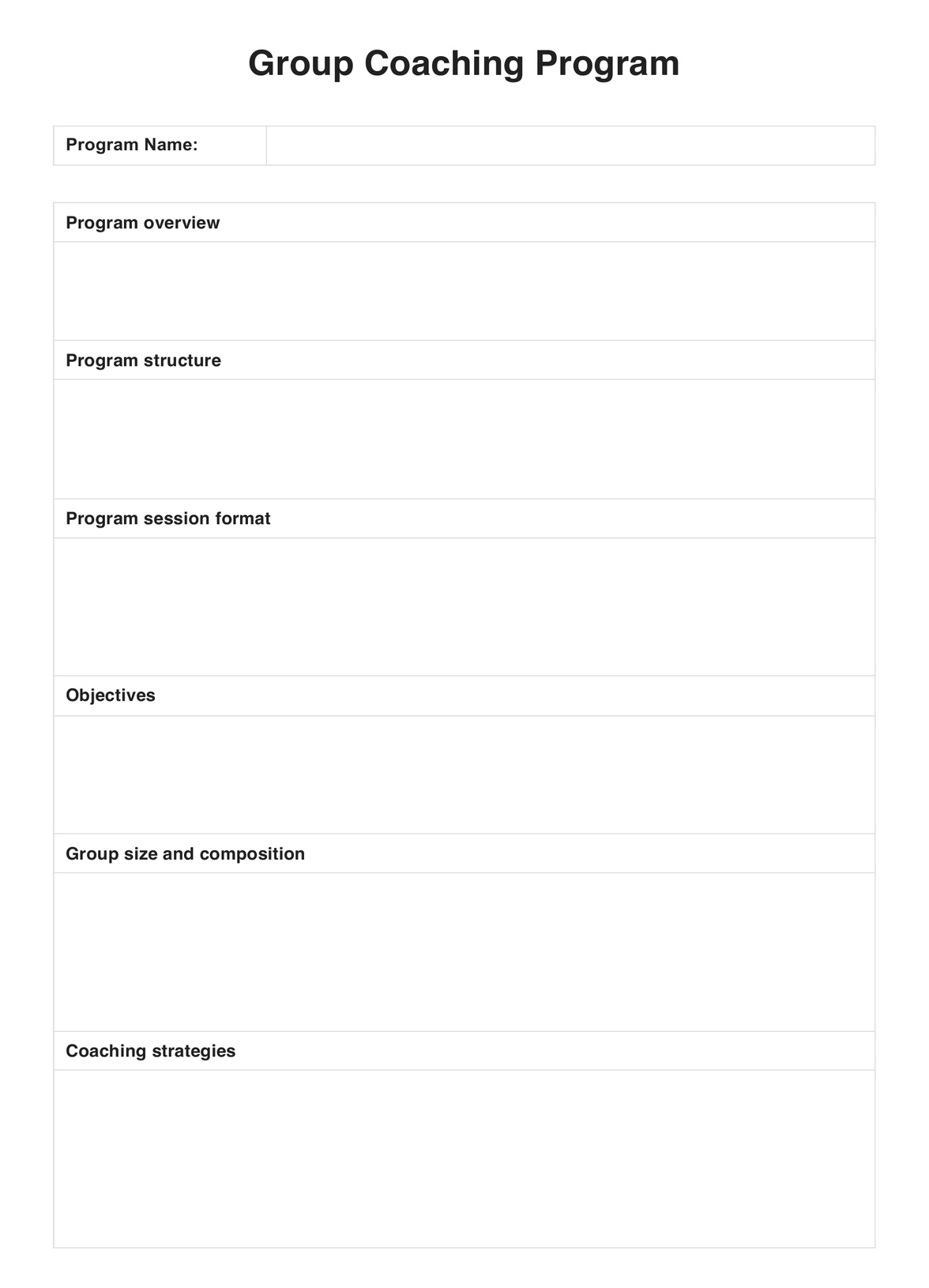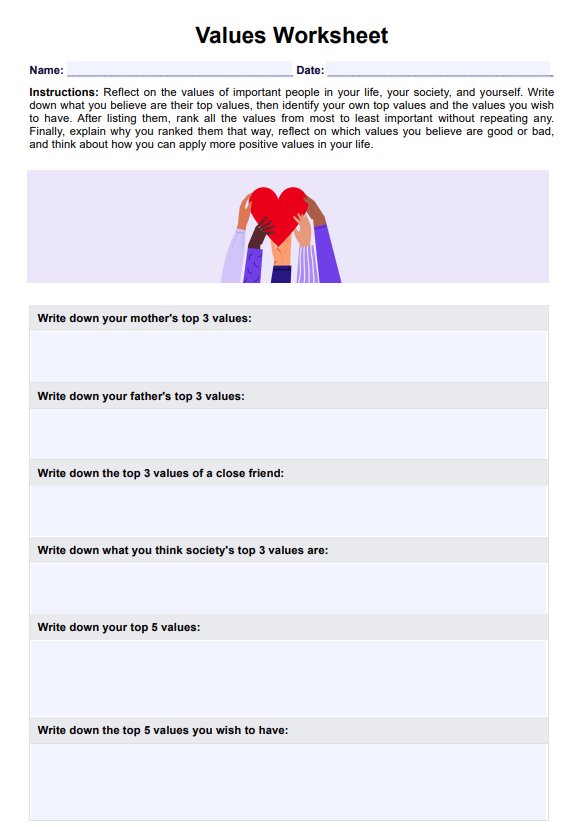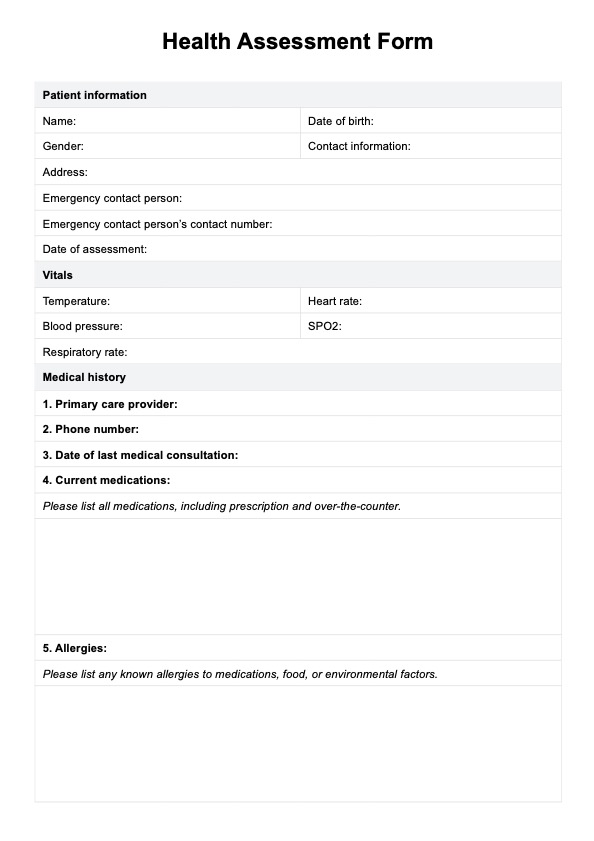Cross Addiction Worksheet
Carepatron offers integrated software for therapy practice management, streamlining scheduling, billing, and clinical documentation for healthcare providers.


What is cross addiction?
Cross addiction, a complex phenomenon in the realm of addiction recovery, occurs when an individual moves from one addiction to another. This shift can happen between drug abuse and sex addiction, substance abuse and exercise addiction, or from alcohol abuse to compulsive behaviors, among other addictive behaviors. Understanding cross addiction is crucial for effective relapse prevention and managing addiction recovery successfully.
How do people develop cross addiction?
Individuals may develop cross addiction due to various factors, including genetic predisposition, environmental influences, and underlying mental health issues. The physical dependence on one substance or behavior can lead to withdrawal symptoms, driving the person to seek relief in other addictive behaviors, thus creating a cycle of addiction.
Cross Addiction Worksheet Template
Cross Addiction Worksheet Example
What is a Cross Addiction Worksheet?
A Cross Addiction Worksheet is a tool designed to help those in addiction recovery understand the nature of cross addiction. It aids in identifying triggers, understanding the relationship between different types of addictive behaviors, and developing strategies for relapse prevention.
How to use our Cross Addiction Worksheet
Our printable Cross Addiction Worksheet can be used as part of a comprehensive treatment plan, in support groups, or as a self-help tool. It involves listing current and past addictive behaviors, identifying patterns, and understanding the negative consequences associated with each. This reflective process is essential for recognizing the risks of cross addiction in one’s life.
Step 1: Download the template
Start by downloading our Cross Addiction Worksheet template. This tool is designed to assist individuals in the journey of addiction recovery, whether you're dealing with drug addiction, alcohol abuse, sex addiction, exercise addiction, or other compulsive behaviors.
Step 2: List current and past addictive behaviors
Begin the process by listing all your current and past addictive behaviors. This includes any substance abuse (such as drugs and alcohol) as well as behavioral addictions. Be honest and comprehensive to ensure a thorough reflection.
Step 3: Identify patterns
After listing the behaviors, take a moment to identify any patterns that emerge. This could involve recognizing a tendency to replace one addiction with another (cross addiction), situations or emotions that typically lead to drug use or engaging in addictive behaviors, and periods of physical dependence or intense withdrawal symptoms.
Step 4: Reflect on negative consequences
For each behavior listed, reflect on the negative consequences that have resulted. Consider the impact on your mental health, relationships, professional life, and any co-occurring disorders that may have been affected or exacerbated by your addiction(s).
Step 5: Recognize the risks of cross addiction
Using the insights gained from your reflections, acknowledge the risks of cross addiction in your life. Understanding cross addiction is crucial for relapse prevention and ensuring a successful recovery from all forms of addiction.
Step 6: Use in support groups or treatment plans
Integrate the worksheet into your broader treatment plan. Discuss your findings in support group meetings or therapy sessions to gain additional insights and support. Sharing in a group setting can be particularly powerful, offering perspectives from others who have faced similar challenges.
Step 7: Formulate a relapse prevention strategy
Based on your worksheet reflections, work with your healthcare provider, support group, or through self-help efforts to formulate a robust relapse prevention strategy. This plan should address the specific patterns and consequences identified in the worksheet, aiming to mitigate the risks of cross addiction and support a healthy recovery journey.
Step 8: Continual reflection and adjustment
Addiction recovery is an ongoing process. Regularly return to your Cross Addiction Worksheet to update it with any new behaviors or insights. This continual reflection can help adjust your relapse prevention strategies as needed, ensuring they remain effective as you progress in your recovery.
By following these steps and using our printable Cross Addiction Worksheet as a guide, individuals struggling with addiction can gain a deeper understanding of their behaviors and the interconnected nature of their addictions. This process is vital for anyone committed to achieving a sustained recovery from drug abuse problems, alcohol abuse, and other addictive behaviors.
Benefits of using this worksheet
Using our free Cross Addiction Worksheet can lead to several benefits, including:
Deeper understanding of addictive behaviors
Utilizing the Cross Addiction Worksheet facilitates a deeper comprehension of addictive behaviors. It aids individuals in recognizing patterns of drug abuse, alcohol abuse, and other compulsive behaviors, such as sex or exercise addiction, that may have previously gone unnoticed. This tool is instrumental in addiction recovery, helping to unveil the intricate layers of cross addiction and substance use.
Enhanced self-awareness
The process of filling out the worksheet increases self-awareness, highlighting how different types of addictions can interconnect and affect various aspects of one's life. By understanding the nature of addiction, from physical dependence to the psychological craving for drugs, alcohol, or other addictive substances, individuals gain insight into their mental health and behaviors.
Relapse prevention during addiction recovery
Armed with knowledge and insights gained from the worksheet, individuals are better equipped to prevent relapse. Identifying triggers, understanding the risk of engaging in new addictive behaviors, and formulating a robust relapse prevention plan are key components of early recovery. This worksheet serves as a roadmap for navigating the challenges of staying abstinent from substance use and other addictive habits.
Framework for addressing co-occurring disorders
The Cross Addiction Worksheet offers a clear framework for identifying and addressing co-occurring disorders. Many individuals struggling with addiction also face mental health issues, such as anxiety, depression, or other mood disorders. By using this worksheet, one can begin to understand the connection between addiction and mental health, paving the way for integrated treatment approaches.
Support for family members
This tool is not only beneficial for the individual in recovery but also provides support for family members. By understanding cross addiction, family members can better support their loved ones through the recovery process. Resources like SAMHSA's National Helpline offer additional support and information on dealing with drug use, alcoholism, and the impact of addiction on family dynamics.
Access to additional resources
Completing the worksheet encourages individuals to seek additional resources and support groups to aid in recovery. Engaging with communities that understand cross addiction, participating in support groups, and accessing professional help are crucial steps toward successful recovery. The worksheet acts as a stepping stone to a wide range of resources available to those looking to overcome addiction and its negative consequences.
By integrating the Cross Addiction Worksheet into one's recovery journey, individuals gain invaluable insights into the complex nature of addiction, including drug abuse problems, alcohol abuse, and other addictive behaviors. It provides a structured approach to understanding and overcoming cross addiction, supporting individuals in achieving long-term success in their recovery journey.
How can cross addiction be prevented?
Prevention of cross addiction involves comprehensive treatment plans that address all aspects of an individual's life, including mental health issues, family members' support, and access to professional help. Engagement in support groups, development of healthy coping mechanisms, and continuous monitoring for signs of new addictive behaviors are crucial.
How is cross addiction treated?
Treatment for cross addiction typically involves a combination of therapy, support groups, and sometimes medication to manage withdrawal symptoms and co-occurring disorders. It requires a holistic approach that addresses both the psychological and physical aspects of addiction.
Commonly asked questions
Yes, cross addiction can occur with any type of addiction, whether it’s related to substance use, behavior, or compulsive habits.
Individuals with a history of multiple addictions, underlying mental health problems, or a lack of support system may be at an increased risk for cross addiction.
Family members can offer support by encouraging treatment, participating in family therapy sessions, and learning about the nature of addiction and recovery.

.jpg)
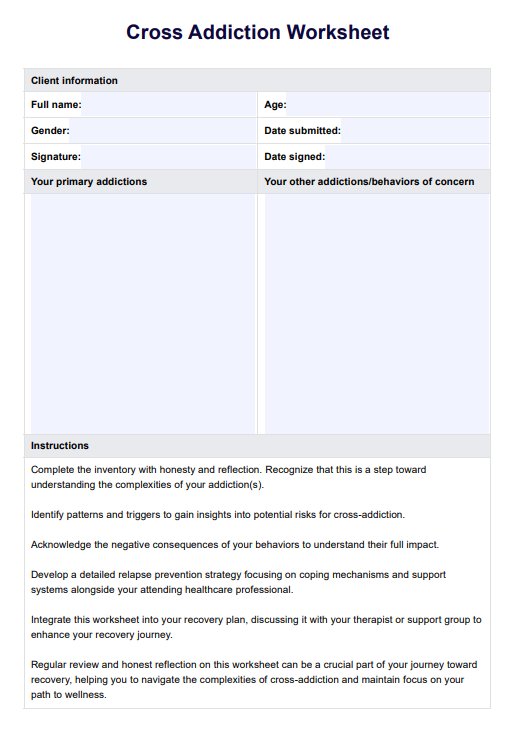
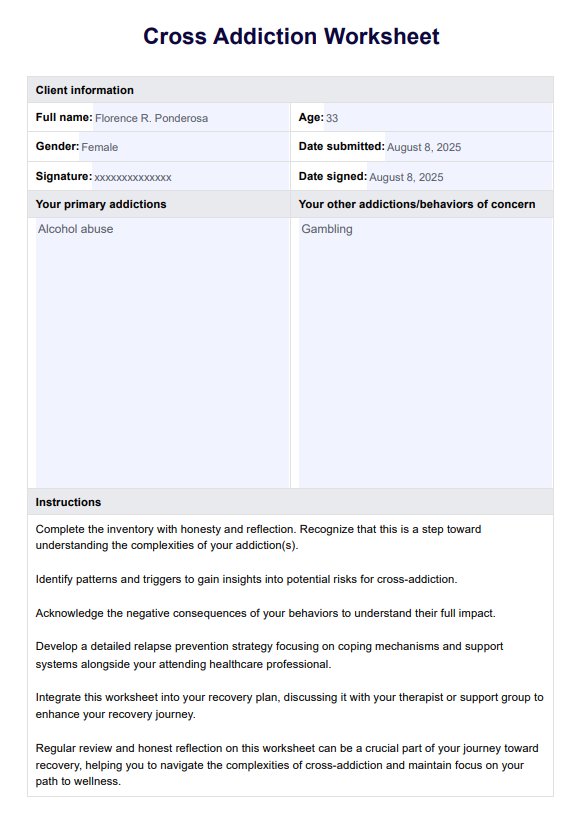

















-template.jpg)


